Even though most brands and businesses would say “that’s not the case here,” creating a supportive and safe workplace environment for employees with disabilities is still a widespread challenge—and a big part of the problem can be attributed to PR shortfalls in communicating inclusion policies and support, new research from the Institute for Public Relations reveals.
Despite nearly three-quarters (73 percent) of employees saying they want to see people with disabilities represented in commercials, advertisements, and social media, only one-third said their organization actually features people with disabilities on these channels, according to IPR’s new study, Disabilities in the Workplace: Culture, Communication, Support and Inclusion, conducted and analyzed with research partner Voya Financial.
According to the Centers for Disease Control and Prevention, 27 percent of adults have some type of disability. The new study explores how organizations support and communicate about disabilities and caregiving in the workplace—uncovering some urgent discrepancies between management and employees with disabilities.
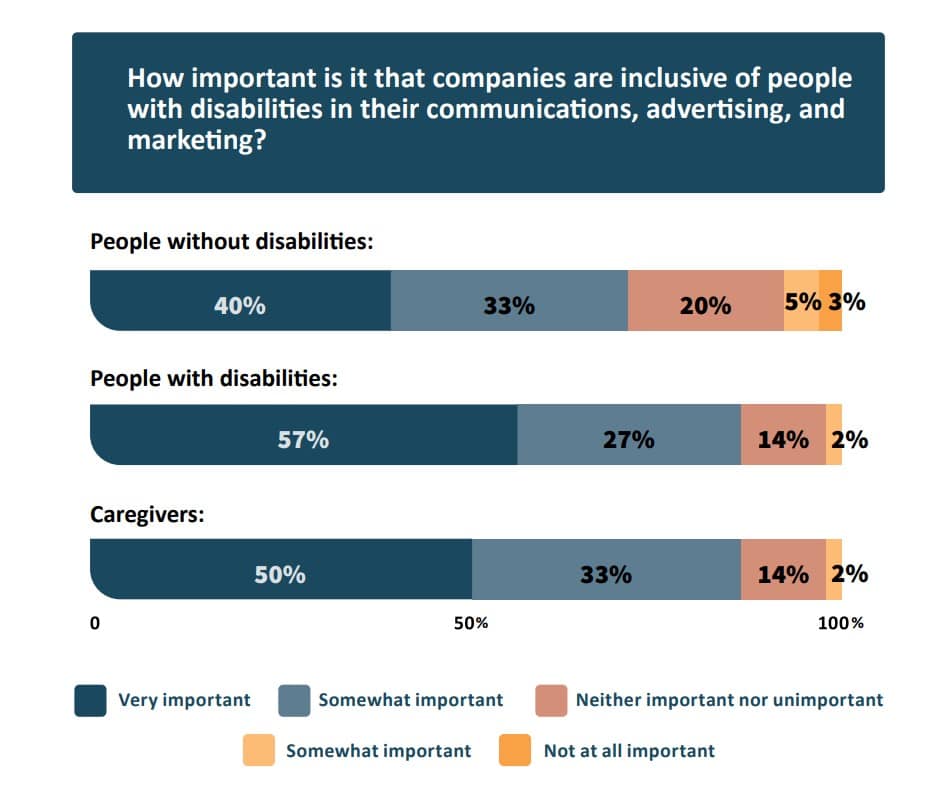
“This report’s comprehensive insights can help organizations bridge knowledge gaps and take specific and supportive actions for people with disabilities and caregivers,” said Dr. Tina McCorkindale, president and CEO of the Institute for Public Relations, in a news release. “Organizations can enhance employee well-being, retention, and productivity by fostering inclusive environments, improving communication and visibility, and implementing targeted programs.”
Internal and external communication
Just half (51 percent) of overall employees surveyed said their organization communicates well about how to support employees with disabilities, while those with disabilities rated their organizations higher (62 percent). Slightly more than half of the employees acknowledged their company effectively communicates internally and externally about leadership’s commitment to disability inclusion. Employees—including people with disabilities and caregivers—felt their company communicates more effectively internally about disability accommodation programs and policies (59 percent) compared to how well it publicly celebrates its commitment to supporting individuals with disabilities (53 percent).
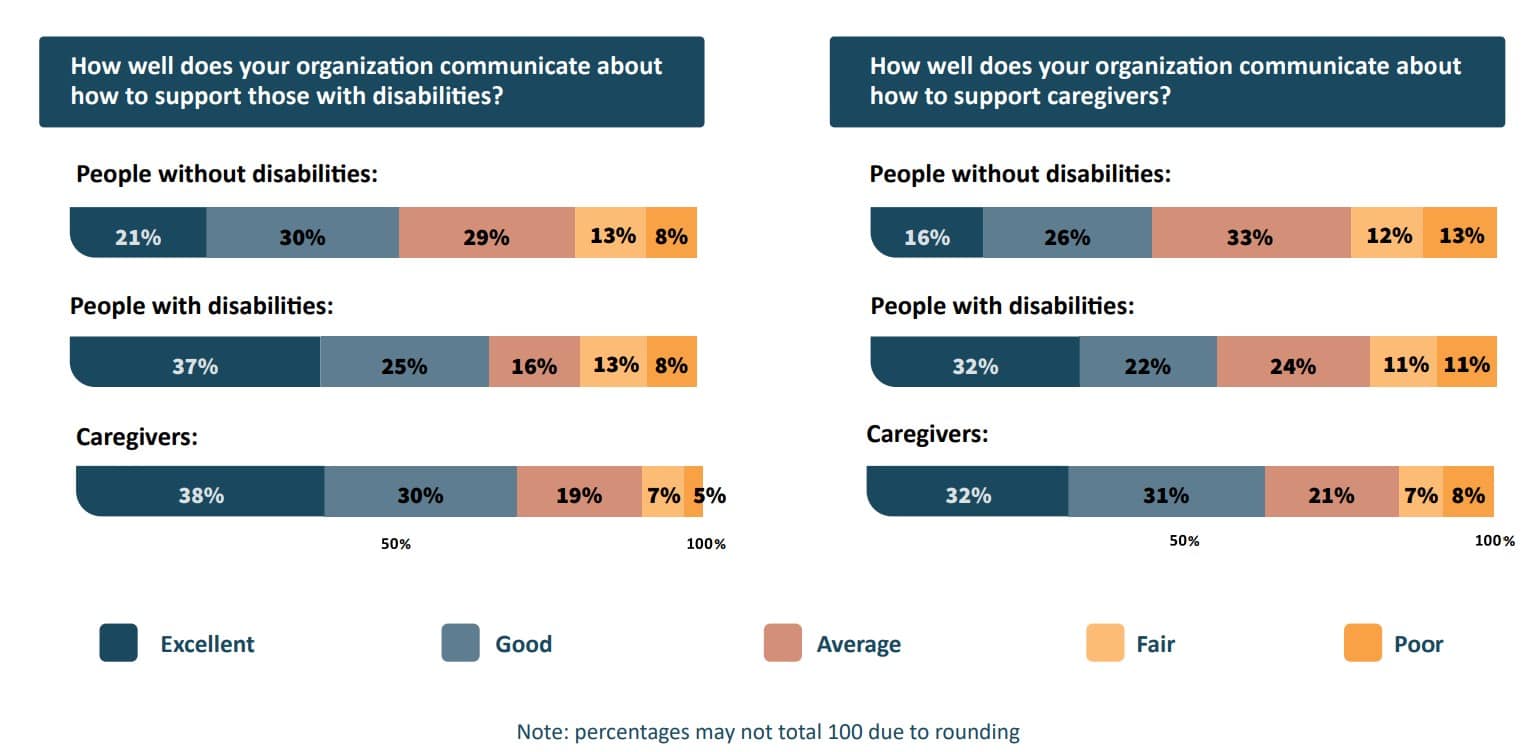
Support and understanding
While employees generally perceived that their organization fosters overall diversity, equity, and inclusion (66 percent), those numbers were significantly less when employees were asked about the specific disability-related programs in their organization. For example, less than half of employees said their organization makes hiring individuals with disabilities a high priority (46 percent). Additionally, findings indicate a lack of clarity concerning how disabilities are defined within organizations, with only 45 percent of respondents claiming to be “very familiar” with their organization’s disability definition.
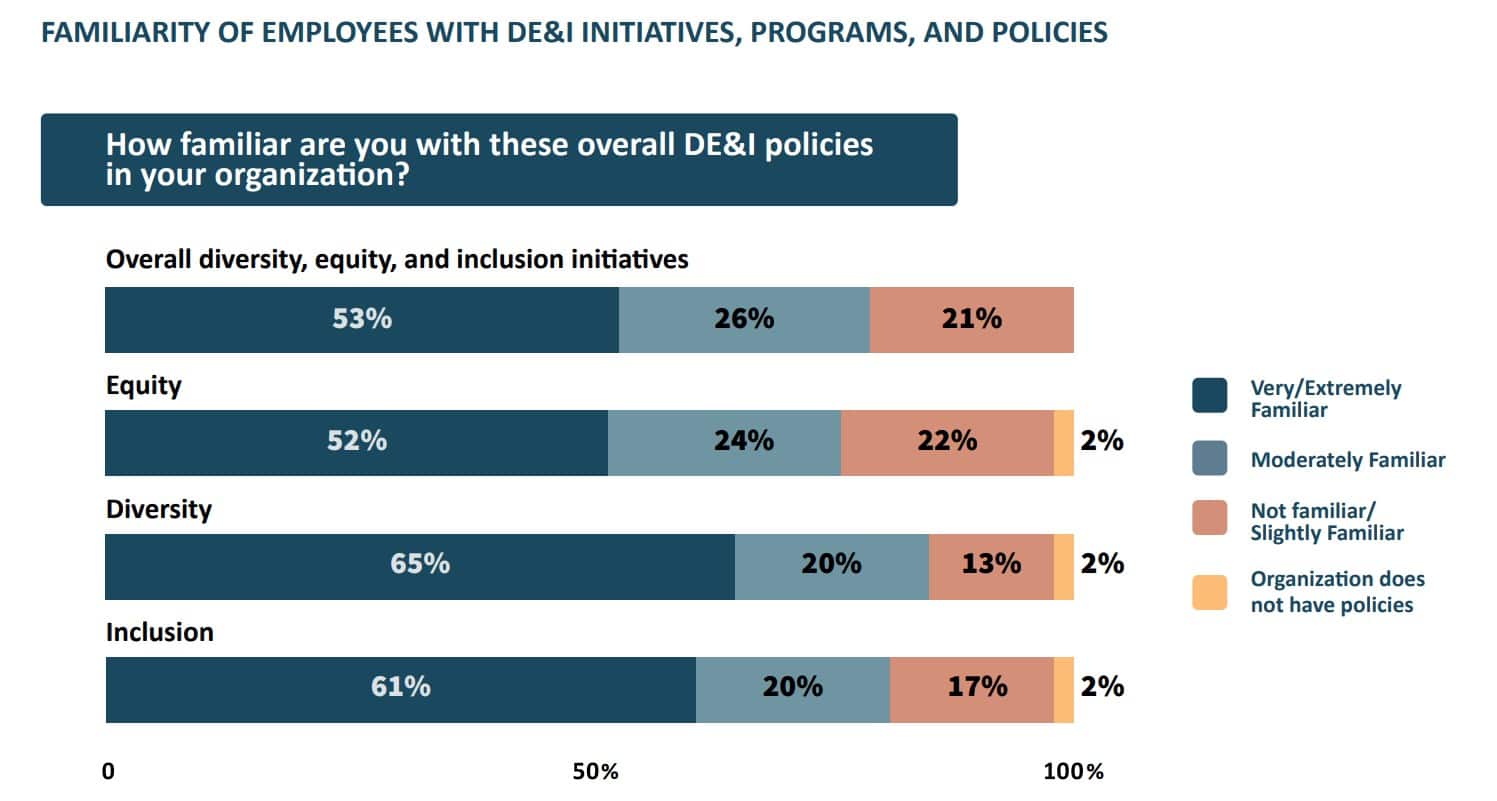
Desire for knowledge
Both employees with and without disabilities expressed a desire to learn more about disability inclusion within their organization. The survey revealed that over half of the employees without disabilities (53 percent) and a significant majority of those with disabilities (72 percent) were interested in disability-related education within their organization. This presents a valuable opportunity for organizations to meet their employees’ needs and foster a more inclusive environment.
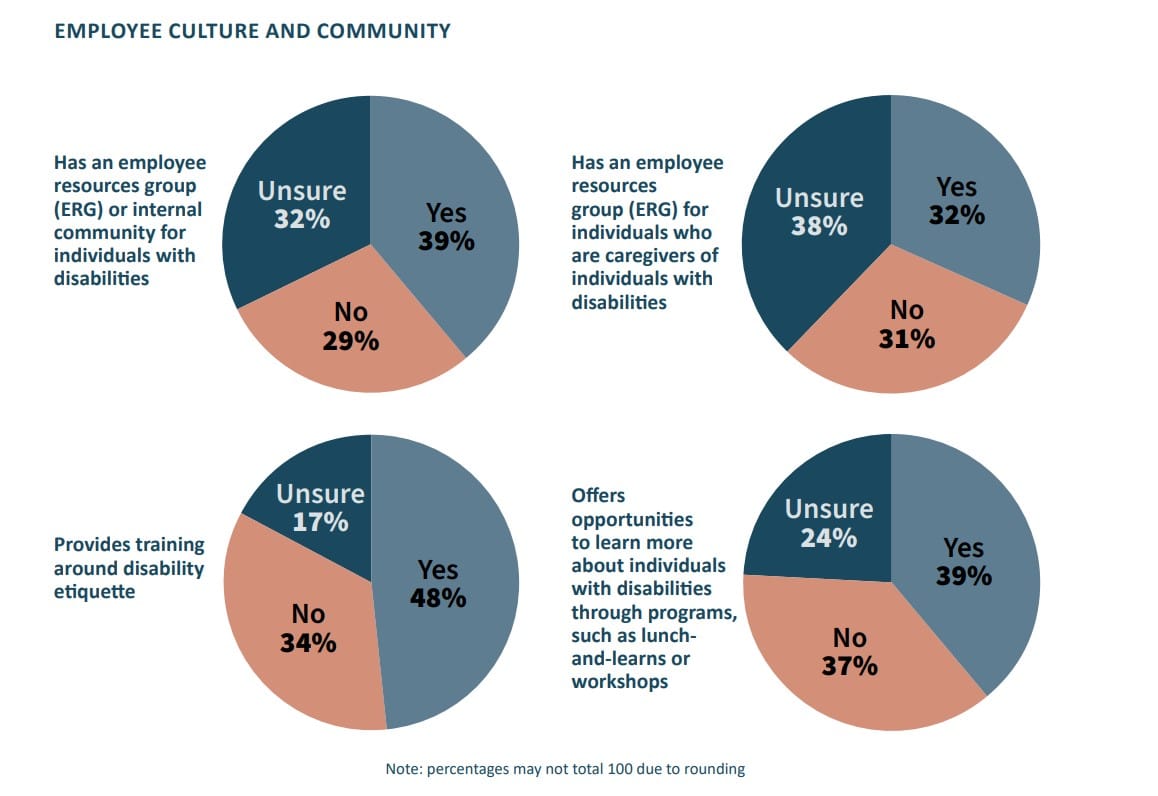
Resource allocation and employee satisfaction
Approximately 4-in-10 employees with disabilities reported they did not feel their organization was providing them with the best resources, benefits, and flexibility to succeed in their positions. Organizations are urged to conduct audits of their current offerings and ensure employees are aware of the support and benefits available to them, thereby improving recruitment, retention, and overall productivity. The survey also revealed that while employees were generally familiar with overall policies and programs, they knew less about specific offerings such as financial empowerment and how to make technology accessible.
Remote and hybrid workforce
Fully remote and hybrid employees consistently rated their organizations higher in terms of creating an inclusive environment and providing support for individuals with disabilities and caregivers. These employees expressed a greater satisfaction with their organization’s efforts, highlighting the need for organizations to consider and adapt to employee needs to foster inclusivity.
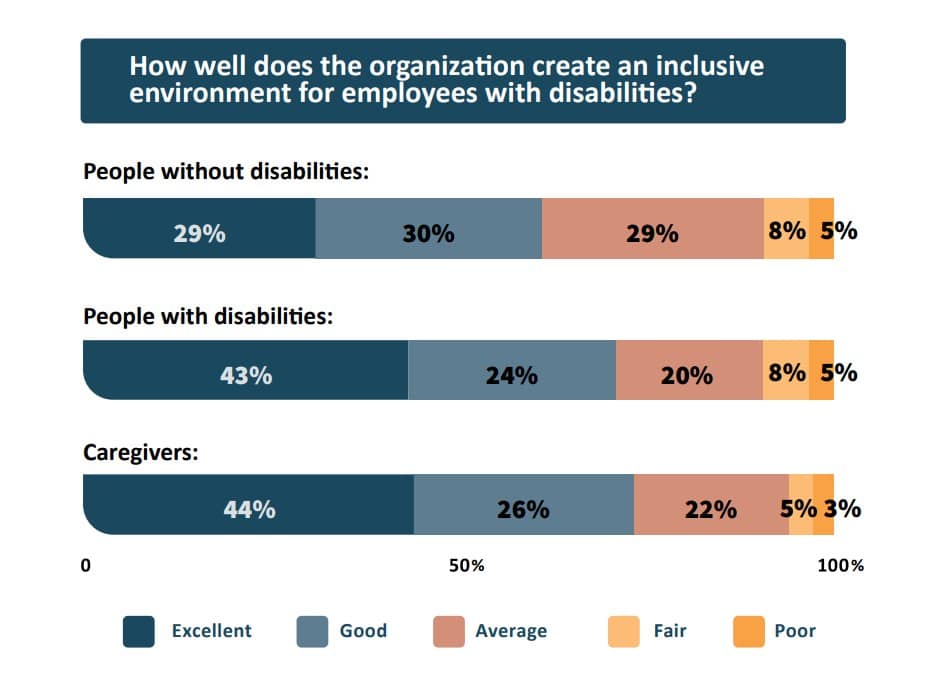
“This research from IPR aligns very much with our observations and experiences focusing on disability inclusion as a key aspect of our culture—and an important focus of our brand, communications and marketing strategies and tactics at Voya during the past several years,” said Paul Gennaro, chief brand and communications officer at Voya Financial, in the release. “The data clearly speaks to the need for organizations—and leaders—to proactively include people with disabilities in brand, communications and marketing activities. Doing so not only responds to what employees and consumers are very clearly asking for from companies, it also helps drive positive societal change by being inclusive of people with disabilities in the same way that companies are doing for other marginalized communities, which also happen to comprise the disability community.”
Download the full report here.
The study, conducted in January 2023, was based on a survey of 1,014 employees who work in organizations with 15 or more people.








